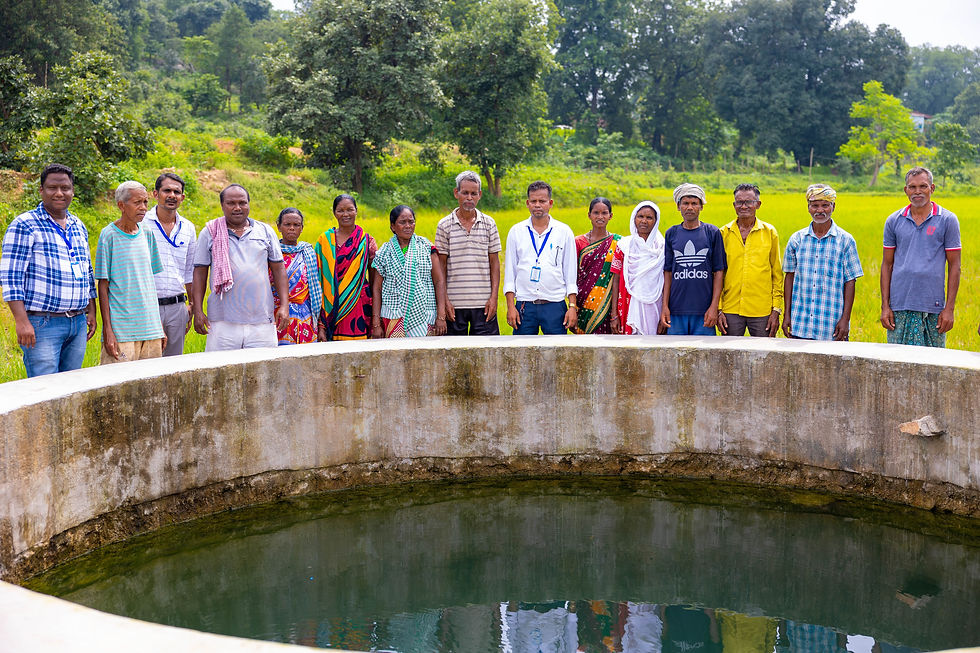Protecting the Environment in Sundargarh District – A Rural Imperative
- sssorgdkl
- Jun 13
- 3 min read

Environmental Context and Challenges
Sundargarh district in Odisha, rich in biodiversity, forests, and rivers, is home to many Adivasi communities whose livelihoods are deeply dependent on natural resources. However, the region faces serious environmental threats due to deforestation, mining, erratic rainfall, and climate change. Subdega and Bargaon blocks are particularly affected, where rising temperatures and resource depletion jeopardize traditional livelihoods, agriculture, and water security.
Why Environmental Protection is Crucial
Environmental protection is not just an ecological issue in Sundargarh—it is essential for social and economic survival. Agriculture, forest produce, and livestock rearing form the backbone of rural livelihoods, and their deterioration threatens food security and income. Women bear the brunt of resource depletion as they walk longer distances for water and fuel. Climate variability has also led to unpredictable rainfall, failed crops, and increased rural indebtedness and migration.

Moreover, Sundargarh is ecologically sensitive, hosting rare flora and fauna. Biodiversity loss disrupts natural ecological services like pollination and pest control. Additionally, indigenous knowledge systems—such as sacred groves and herbal medicine—are at risk due to ecological change. Preserving the environment helps protect not just resources, but cultural identity and traditional wisdom.
The Role of Rural Communities in Conservation
Rural communities in Sundargarh are not passive victims of environmental change—they are vital agents of conservation. Their deep ecological knowledge, cultural practices, and proximity to forests position them to lead environmental protection through:
Community Forest Management: Villagers form protection committees to patrol forests, enforce sustainable use, and reforest degraded areas.
Water Resource Management: Traditional water systems like ponds and check dams are revived to improve water availability and reduce drought vulnerability.
Sustainable Agriculture: Organic inputs, mixed cropping, indigenous seeds, and climate-smart practices reduce costs and improve yields while maintaining ecological balance.
Cultural Traditions: Sacred groves and religious taboos act as informal conservation tools that protect biodiversity.
Youth and Women Leadership: Women’s self-help groups lead afforestation and clean energy campaigns, while youth drive awareness and environmental education.

Protective Strategies and Potential Risks
Effective environmental protection in rural Sundargarh combines traditional practices with modern interventions. Strategies include:
Agroecological Farming: Promoting organic, climate-resilient crops and indigenous seeds.
Water Conservation: Renovating water bodies, promoting drip irrigation, and watershed management.
Biodiversity Protection: Forest regeneration, fire control, and regulated grazing.
Renewable Energy and Waste Management: Solar power, composting, and reducing plastic use.
Education and Awareness: Grassroots education, green clubs, and folk media campaigns.

If neglected, environmental degradation could cause declining crop productivity, water scarcity, forest resource depletion, and mass migration—deepening poverty and displacing communities.
Samajik Seva Sadan (SSS): A Decade of Impact
For over ten years, SSS has worked in Subdega and Bargaon blocks, leading sustainable development and environmental protection initiatives:
Agricultural Transformation: Over 1,000 farmers trained in organic farming, SRI methods, and millet revival. Seed banks promote biodiversity and self-reliance.
Water Security: 50+ water harvesting structures and micro-irrigation systems built to improve water availability.
Forest and Resource Governance: Strengthened community forest management, conducted afforestation, and supported participatory natural resource management using tools like GIS mapping.
Livelihood Diversification: Promoted beekeeping, poultry, mushroom farming, and forest produce processing to reduce pressure on land and forests.
Institutional Capacity Building: Created and strengthened 100+ SHGs, youth clubs, and local governance bodies. Awareness programs and exposure visits further empower community action.

Conclusion
Sundargarh environment is the lifeline of its rural communities. Through grassroots engagement, traditional wisdom, and strategic support from organizations like SSS, the region is moving toward sustainability. However, continued investment in climate adaptation, women’s leadership, and inclusive environmental governance is critical. Environmental protection in Sundargarh is not only about preserving nature—it is about securing livelihoods, culture, and the very future of its people.





Comments